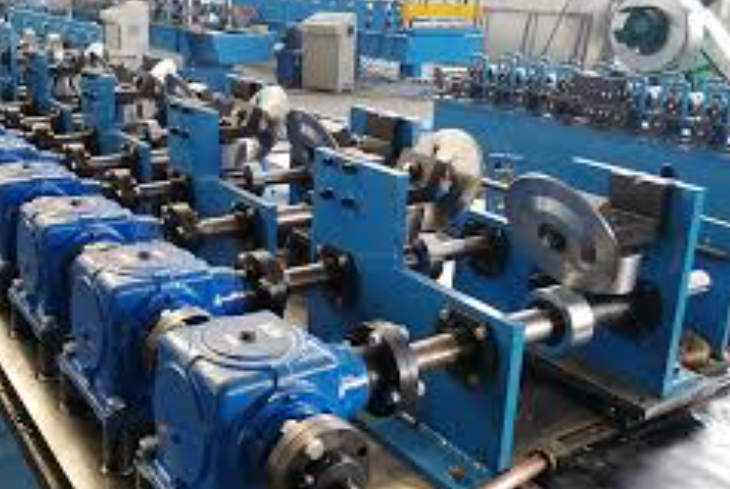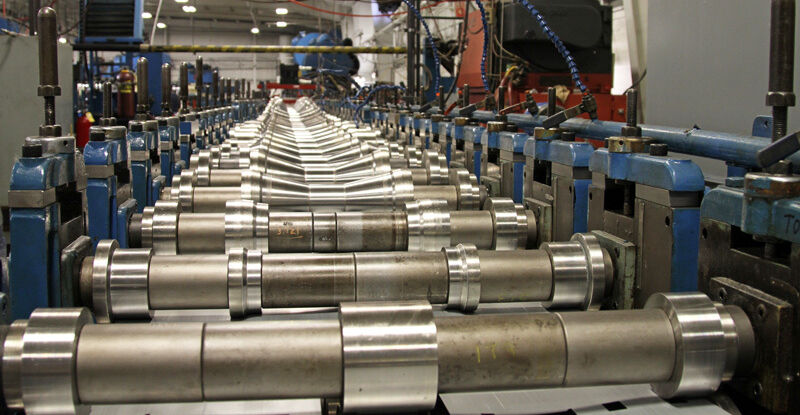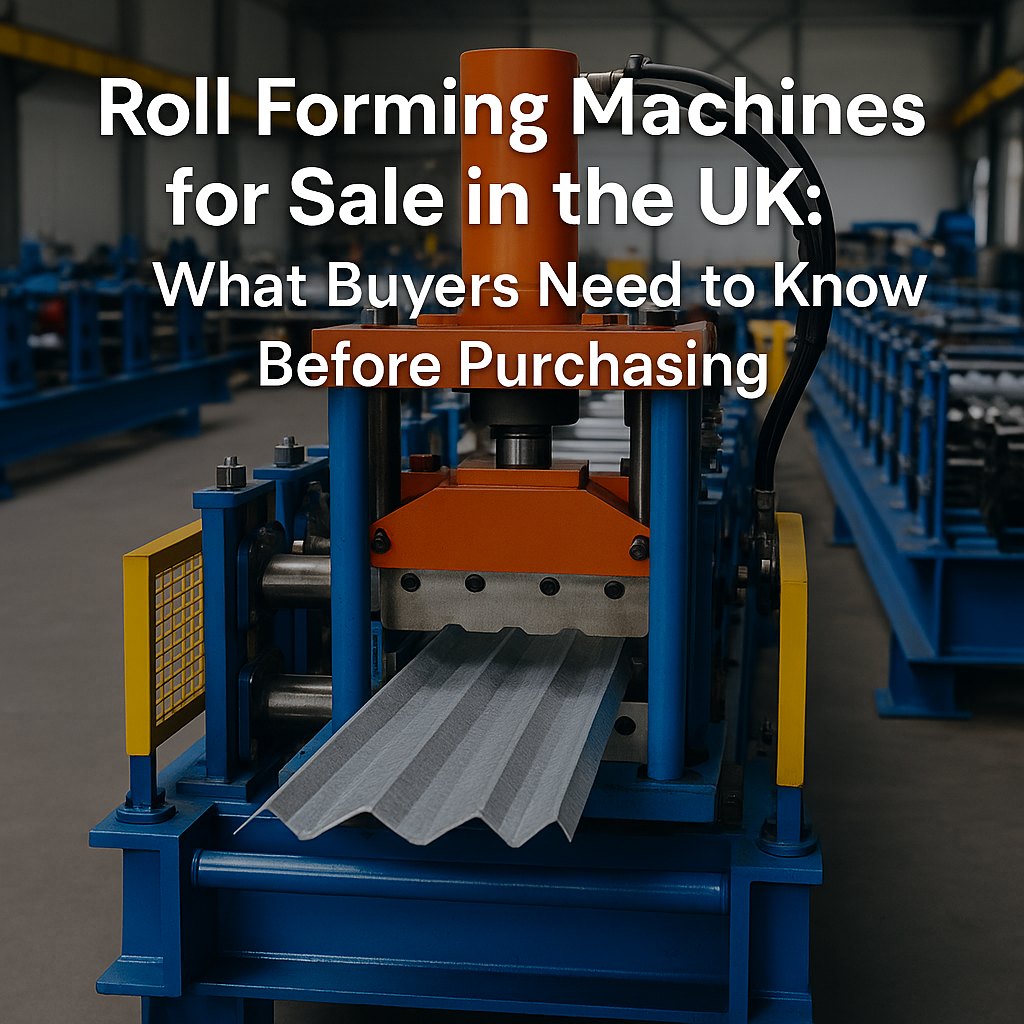
Posted on Saturday, September 27, 2025
A roll forming machine clutch is a mechanical device that connects and disconnects the power from the motor to the machine’s drive system. In simple terms, it acts as the “middleman” between the motor and the forming rollers, controlling when the rollers engage with the coil and when they stop.
The clutch plays a vital role in:
Smooth operation – allowing controlled starts and stops without jerking the machine.
Protecting the drive system – disengaging during overloads to prevent damage to motors, shafts, and gearboxes.
Improving operator control – giving flexibility during coil loading, testing, or fine adjustments.
Ensuring product consistency – helping maintain steady forming pressure and avoiding uneven profiles.
When the clutch fails, the machine cannot transmit power efficiently. This leads to lost production, damaged components, and costly downtime. For this reason, clutch repair and replacement are essential parts of roll forming machine maintenance.
Before starting any repair, it’s important to confirm that the clutch is the issue. Look out for these symptoms:
Slipping under load (rollers hesitate even though the motor is running).
Burning smell or excess heat from the clutch housing.
Grinding, squealing, or rattling noises.
Inconsistent engagement or failure to disengage.
Visible wear, cracking, or contamination on clutch components.
Clutch work requires careful handling since it’s directly connected to the drive system. Always begin with safety:
Shut down the main power and apply lockout/tagout.
Release stored energy from hydraulics or pneumatics.
Remove guards to expose the clutch area.
Gather tools: pullers, torque wrenches, alignment gauges, feeler gauges, and replacement parts.
Refer to the OEM service manual for specifications and tolerances.
A detailed inspection determines whether the clutch can be repaired or needs replacing:
Friction plates – Check thickness against OEM specifications.
Contamination – Look for oil, grease, or dirt on friction surfaces.
Alignment – Misaligned shafts cause premature wear.
Heat damage – Discoloration, cracks, or burnt smell indicate overheating.
Not all clutches need full replacement. In many cases, you can restore performance with minor repairs:
Adjust clearances – Some clutches allow spring or gap adjustments.
Clean surfaces – Remove oil or grease contamination carefully.
Replace wear parts – Install new friction plates, discs, or springs.
Lubricate moving components – Bearings should be greased, but friction linings must remain clean and dry.
If inspection shows the clutch is beyond repair, replacement is the best option.
Replacement procedure:
Disconnect drive components (belts, chains, or couplings).
Support the clutch assembly to prevent accidental drop.
Remove mounting bolts and pull the clutch from the shaft (use a puller if needed).
Install the new clutch, aligning keyways and shafts properly.
Torque bolts to OEM specifications.
Reconnect drive components and reinstall guards.
Once repaired or replaced:
Rotate the assembly by hand to confirm free movement.
Run the machine slowly to check for slip, vibration, or noise.
Perform test runs with coil material to verify consistent forming.
Monitor clutch temperature during the first production hours.
| Symptom | Likely Cause | Recommended Solution |
|---|---|---|
| Clutch slips under load | Worn or contaminated friction plates | Clean surfaces or replace friction plates |
| Burning smell or heat | Excessive friction, misalignment, or overload | Realign clutch, reduce load, replace worn parts |
| Grinding or rattling noises | Damaged bearings or loose fasteners | Replace bearings, tighten bolts to spec |
| Clutch won’t engage | Broken springs, damaged linkage, or worn plates | Replace springs or linkage, check friction plates |
| Clutch won’t disengage | Misadjusted clearance, warped discs, or mechanical jam | Adjust clearance, replace warped parts, remove obstructions |
| Excessive vibration during operation | Misalignment or unbalanced assembly | Re-align shaft and clutch, check coupling balance |
This quick reference can help operators and maintenance teams identify problems early and take corrective action before they cause production stoppages.
A well-maintained clutch prevents costly downtime and prolongs machine life. Follow these practices:
Keep the clutch area clean and dry.
Avoid feeding material that exceeds the machine’s rated thickness or strength.
Check and adjust clearances at scheduled intervals.
Replace friction materials before they are fully worn out.
Always use OEM or approved spare parts.
The clutch on a roll forming machine may be a small component, but it is critical to the smooth and safe operation of the entire production line. Timely repair or replacement ensures consistent product quality, reduces downtime, and protects more expensive machine components from failure.
If you’re uncertain whether your clutch needs repair or full replacement—or if you need help sourcing the right parts—Machine Matcher can assist with inspections, spare parts, and complete replacement assemblies built for your roll former.

Most Popular Roll Forming Machines in the United Kingdom
Posted on Thursday, December 11, 2025
This blog breaks down the five most in-demand roll forming machines in the UK

Can I Finance a Roll Forming Machine?
Posted on Thursday, December 11, 2025
Financing a roll forming machine is easier than most buyers think. Here’s how leases, loans, and payment plans make production affordable.

Roll Forming Machines for Sale in the UK: What Buyers Need to Know Before Purchasing
Posted on Thursday, December 11, 2025
This complete guide explains everything UK buyers must know before purchasing, including machine types, voltage requirements, CE/UKCA compliance

Roll Forming Machines for Sale in the USA: What Buyers Need to Know Before Purchasing
Posted on Wednesday, December 10, 2025
This guide explains everything U.S. buyers need to know before purchasing a roll forming machine, including machine types, pricing, voltage
Copyright 2026 © Machine Matcher.